Nicholas Roerich. Artist, archeologist, writer and public figure
all your inexhaustible beauties
all your spiritual treasures
all your infinity in all heights
and we will defend the open spaces. "
Nicholas Roerich.
Nicholas Roerich was born on October 9 1874, in the city of St. Petersburg. His last name is of Scandinavian origin and means “rich in fame”. Konstantin Fedorovich Roerich, the father of the future artist, belonged to a Swedish-Danish family, whose representatives moved to Russia at the beginning of the 18th century. He worked as a notary of a district court and was a member of the Free Economic Society. Being ashamed of the serfdom of the Russian peasants, Konstantin Fedorovich took an active part in the development of the reform of the 1861 year for their release. Among his clients and friends were many well-known public figures and scholars. Often in the living room of the Roerichs one could see a chemist Dmitry Mendeleev and a historian Nikolai Kostomarov, a lawyer Konstantin Kavelin and a sculptor Mikhail Mikeshin.
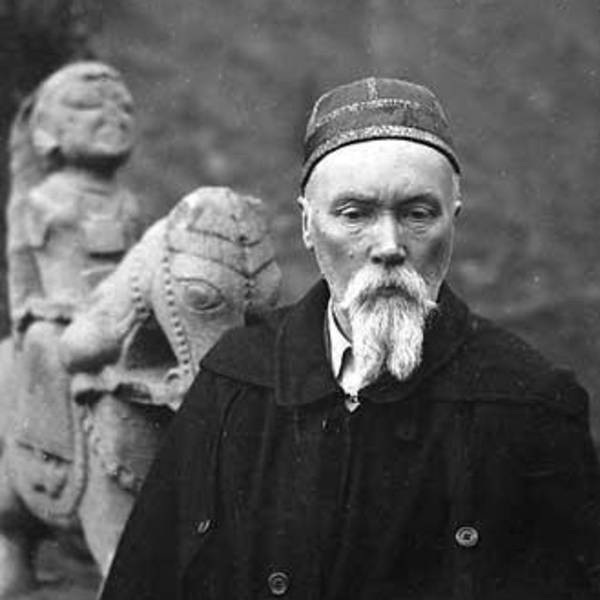
Since childhood, Nicholas possessed a rich imagination, was interested in Ancient Russia and its northern neighbors. The boy loved to listen to old legends, was fond of reading historical books and dreamed of long journeys. Already at the age of eight it was impossible to tear him away from paints and paper, at the same time he began to compose the first stories. Family friend Mikhail Mikeshin, drawing attention to the boy's penchant for drawing, gave him initial lessons in skill. Young Kolya also had one more hobby - archaeological excavations. The guy was attracted to them by the famous doctor and archaeologist Lev Ivanovsky, who often visited Izvara - the Roerichs' estate. In the vicinity of Izvara there were many mounds, and thirteen-year-old Nikolai personally found several gold and silver coins of the XNUMXth-XNUMXth centuries.
Roerich received his first education in the unique Karl May school, which had a harmonious balance of the spirit of free creativity and discipline. He studied in it from 1883 to 1893 of the year, his classmates were such famous Russian artists as Konstantin Somov and Alexander Benois. In 1891, the first literary works of Nicholas were published in the Russian Hunter, Nature and Hunt, and the Hunting Newspaper. Konstantin Fedorovich was convinced that Nikolai, certainly the most capable of his three sons, should continue the family business and inherit the notary's office. But Roerich himself showed interest only in geography and history, while dreaming of becoming a professional artist.
Despite the differences in the family, the young man managed to find a compromise - at 1893 he entered the Academy of Arts, at the same time becoming a law student at St. Petersburg University. A tremendous burden fell on him, but Roerich turned out to be a real workhorse - he was strong, resilient and tireless. Every morning he began to work in the studio of his teacher, the artist Arkhip Kuinji, then he ran to the university for lectures, and in the evenings Nikolay was engaged in self-education. A tireless student organized a circle among his comrades in which young people studied Old Russian and Slavic art, ancient literature and Western philosophy, poetry, religious studies, history.
It is worth noting that the young Roerich was never a scholarly “rusk”; rather, he was expressive, touchy and ambitious. It is well reflected by the emotional notes made by him in his diary, for example: “Today I have completely spoiled the etude. Nothing will come of it. ... Oh, I smell, delete. What eyes look familiar to me. Do not allow, Lord, a shame! ". But, as you know, no shame happened to him. On the contrary, as an artist, Nikolai Konstantinovich made a rapid take-off. Roerich not only successfully graduated from the Academy of Arts in 1897, but was also honored by masters - Pavel Tretyakov himself acquired his painting “The Messenger” directly from the diploma exhibition for his museum.
At 1898, Nikolay Konstantinovich successfully graduated from St. Petersburg University, and in 1899, he published a wonderful article “On the way from the Varangians to the Greeks,” written under impressions of a trip to Veliky Novgorod. Also, from 1896 to 1900, Roerich repeatedly reported on the results of his excavations in the St. Petersburg, Novgorod and Pskov provinces. During these years, he lectured at the Archeological Institute, published in well-known St. Petersburg publications and painted a lot. His work was really lucky - they noticed, they are regularly exhibited. The end of 1900 - the beginning of 1901, Roerich spent in Paris, where, under the guidance of the famous French painter Fernand Cormon, he improved his artistic education.
In the 1899 year, resting in the summer at the estate of Prince Pavel Putyatin, located in Bologoye, Roerich met his niece Elena Ivanovna Shaposhnikova, the daughter of a famous architect, as well as great-great-granddaughter of the legendary commander Mikhail Kutuzov. The young beauty of high growth with bushy brown hair and dark almond-shaped eyes made a huge impression on Roerich. Elena Shaposhnikova saw something significant in it, as she later wrote: "Mutual love decided everything." However, her relatives were against marriage - Nikolai Konstantinovich seemed to them not sufficiently well-born. However, Elena Ivanovna managed to insist on her. The young 28 of October 1901 were married in the church of the Academy of Fine Arts, and on August 16 of the following year, their son Yury was born.
In the 1902-1903 years, Roerich conducted major archaeological excavations in the Novgorod Governorate, participated in exhibitions, gave lectures at the Archaeological Institute, and worked closely with various publications. In 1903-1904, he and his wife visited over forty old Russian cities. During the trip, the Roerichs thoroughly and thoroughly studied the architecture, customs, tales, crafts, and even the folk music of ancient settlements. During this time, Nikolai Konstantinovich created a series of sketches, numbering about seventy-five works written in oil paints. And on October 23 1904, the Roerichs gave birth to the second son, Svyatoslav.
The following years, Nikolai Konstantinovich continued to work hard. At 1904, he visited the USA for the first time, taking part in the World Expo, held in St. Louis. In 1905 with great success, his exhibitions were held in Berlin, Vienna, Milan, Prague, Düsseldorf, Venice. At 1906, he was elected in Russia as a school director at the Society for the Encouragement of the Arts, at Reims - a member of the National Academy, and in Paris - a member of the Autumn Salon. Roerich undertook travels in Italy, Switzerland, Finland, England, Holland, Belgium. In 1909, he was elevated to the full members of the Academy of Arts, since then he received the right to sign his messages as “Academician Roerich”. In the fall of 1910, the artist transferred from his collection to the Museum of Ethnography and Anthropology of Peter the Great over thirty thousand items of the Stone Age. In 1911, at the invitation of Maurice, Denis Roerich took part in the Paris exhibition of religious art, and in May, Emperor Nicholas II 1913 awarded him the Order of St. Vladimir of the fourth degree.
By this time, Roerich’s enthusiasm for the East is becoming increasingly apparent. By the way, it did not appear out of “out of nowhere”; in this respect, the famous artist was not at all original and completely corresponded to the spirit of the times. In 1890, the heir to the throne, Nicholas II, along with Oriental prince Esper Ukhtomsky, visited many cities in India, bringing back an enormous collection of items of local Buddhist worship. A special exhibition was even organized in the halls of the Winter Palace. Later, at the beginning of the 20th century, the books “The Proclamation of Ramakrishna” and “Bhagavatgita” were translated and published in Russia, giving Russians the opportunity to become acquainted with Indian metaphysical doctrines and views on historical and cosmic cycles. Among many others, Nikolai Konstantinovich was captivated by these works, Tibetan wonderworkers and the whole of Tibet as a whole became especially attractive for him.
India began to appear more and more often in the paintings and articles of Roerich. By 1914, when construction of the first Buddhist temple began in St. Petersburg, the interests of Nikolai Konstantinovich to the East were formed so clearly that he joined the construction support committee and met Aghvan Dorzhiev, a Buddhist scholar and envoy of the Dalai Lama. It is known that Roerich was extremely interested in the problem of finding common roots in Asia and Russia. Moreover, he found commonality in everything - in beliefs, in art, even in the soul stock.
In addition to Eastern philosophy, our country, following the West, became completely fascinated by occultism. Among artists, seances have become a very popular pastime. The Roerichs were no exception in this matter either - Benoit, Dygilev, Grabar, von Traubenberg often gathered in their apartment on Galernaya in order to participate in the famous “turnarounds”. Once, the Roerichs even spoke of the famous European medium Yanek, called to the Northern capital by the Russian emperor. Many outstanding scholars of the time did not shun the seance sessions, and the psychiatrist Vladimir Bekhterev was a frequent guest of the Roerichs.
And yet, in this hobby, Nikolai Konstantinovich was different from the majority - in occultism, he saw not just a fashionable and extravagant means to disperse boredom. When one of his comrades — usually the artists Benoit or Grabar — scornfully spoke of “calling the spirits,” Roerich's always restrained indignation was covered with spots. Frowning, he said: "This is an important spiritual phenomenon, and then you need to understand." In general, “sorting out” was his favorite word. However, friends only hid smiles. As for Roerich, he really had no doubt that all his research and cultural activities, all his actions, were subordinate to a certain Higher Service.
In 1914, Roerich held a number of charity exhibitions and auctions in support of our wounded soldiers. In the fall of 1915 at the Drawing School of the Society for the Encouragement of the Arts, he organized the Museum of Russian Art. In March, 1917 Nikolai Konstantinovich took part in a meeting of various artists who gathered at the apartment of Maxim Gorky. They developed an action plan to protect the artistic wealth of the country. In the same year, Roerich refused the post of the Minister of Fine Arts proposed by the Provisional Government.
The February Revolution, which burst out, caught the Roerichs in Karelia, in Serdobol, where they lived in a rented wooden house standing right in the middle of a pine forest. Nikolai Konstantinovich had to move here with his two sons and his wife from raw and dank St. Petersburg due to the artist's illness. He found pneumonia, which threatened with severe complications. I had to abandon the directorship of the school Society for the Promotion of Arts. The cases were so bad that Roerich prepared a will. Nevertheless, even ill, he continued to paint his paintings.
In 1918, due to the closure of the border between our country and separated Finland, the Roerich family was cut off from their homeland, and in March 1919 moved to England through Sweden and Norway. The Roerichs did not intend to live there, Nikolai Konstantinovich was convinced that his path lay to the East. In Asia, he hoped to find answers to the most intimate, "eternal" questions. In the same place, the artist wanted to find confirmation of his hypotheses about the spiritual and cultural ties of the East and Russia. To implement the plan, the Roerichs needed only to acquire visas to India, which, as is known, was a colony of the British crown. However, obtaining the necessary documents was not so easy. Roerich for months knocked the thresholds of bureaucratic institutions, insisted, wrote petitions, convinced, enlisted the help of influential people. In the capital of England, he met with old friends - Stravinsky and Dyagilev, and also got new ones, among which was an outstanding poet and public figure Rabindranath Tagore.
In June, 1920, due to an acute shortage of money, Nikolai Konstantinovich accepted an offer from Dr. Robert Harshe from the Art Institute of Chicago in Chicago to travel around America with exhibition tours and earn the money he needed to travel to India. For three years, Roerich’s paintings had been traveling around twenty-eight cities in the United States, and a great number of listeners gathered at his lectures on Russian art. Roerich had a new obsession at that time. Having survived the First World War, and then the Russian Revolution, he was outraged that intelligent beings are capable of behaving like “crazy people who have lost their human appearance”. Roerich developed his own formula of salvation, he said: “Humanity will unite art. ... Art is inseparable and one. He has many branches, but the root is one. " In the autumn of 1921, on the initiative of Nicholas Konstantinovich in Chicago, the following was founded: The Union of Artists with the Speaking Title “The Burning Heart”, as well as the Institute of United Arts, including sections of architecture, choreography, music, philosophy, theater. At 1922, again thanks to his efforts, the “Crown of the World” was created - the International Cultural Center, in which art and science workers from different countries could work and communicate.
In the fall of 1923, Roerich, together with his family, having managed, finally, to collect the necessary funds, went to India and 2 December of the same year arrived in Bombay. From there he went to the Himalayas in the principality of Sikkim. On the slopes of the eastern Himalayas near the city of Darjeeling, according to Nikolai Konstantinovich, the most significant event in his life occurred - “face to face he met with the Masters of the East” Teachers of the East or, as they were called in India, Mahatma (translated as “Great Soul” ), were Buddhist adherents of the highest level. This meeting was scheduled for a long time - while still in America, the Roerichs were able to establish contact with the Buddhist communities and with their help went out to high rank lamas.
At the same time, the artist had the idea of organizing the first Central Asian research expedition. In October, 1924 Roerich returned to New York for two months in order to issue the necessary documents and prepare for the march. The backbone of the expedition was actually Roerich himself and his spouse, as well as their son Yuri, who had completed the Indo-Iranian branch of the University of London by that time. In addition to them, the group included a colonel and enthusiast of the East Nikolai Kordashevsky, Dr. Konstantin Ryabinin, who for many years comprehended the secrets of Tibetan medicine, as well as several like-minded people who are able and willing to engage in research in various fields: soil science, archeology, geodesy. ... As you progress deep into the lands of Asia, the composition of travelers was constantly changing, someone came, someone left, and local residents joined: the Buryats, the Mongols, and the Hindus. Only the basis was constant - the Roerich family.
Until August, 1925 expedition members lived in Kashmir, and then, through Ladakh, in September of the same year, they moved to Chinese Turkestan. They moved the ancient route through the Indian lands towards the border with the Soviet Union. On the way, travelers examined ancient monasteries, studied the most important monuments of art, listened to local legends and legends, made plans, made sketches of the area, collected botanical and mineralogical collections. In Khotan, during the forced stay, Roerich painted a series of paintings called “Maitreya”.
29 May 1926 Three Roerichs, along with two Tibetans near Lake Zaisan, crossed the Soviet border. And in June of the same year, Nikolai Konstantinovich unexpectedly appeared in Moscow. In the capital, Roerich visited influential Soviet officials - Kamenev, Lunacharsky, Chicherin. The artist calmly replied to all the questions of old acquaintances who remained in Soviet Russia that he needed permission from the authorities to continue the expedition on the lands of the Soviet highland Altai.
However, Roerich appeared in Moscow not only for permission to visit the Altai. He brought with him two letters from the Teachers of the East addressed to the Soviet authorities and a small box containing the sacred land from the places where Buddha Shakyamuni was born - the legendary founder of Buddhism. He also brought a gift to Maitreya as a gift to Soviet Russia. One of the messages said: “Accept our greetings. We send land to the grave of our brother Mahatma Lenin. ” These letters more than forty years lay in the archives, but in the end were published. The first letter listed the ideological aspects of communism, which are close to a certain extent to the spiritual attitudes of Buddhism. On the basis of this connection, communism was presented as a step towards a more advanced stage of evolution and a higher consciousness. The second message of the Mahatm contained information about more vital and practical things. They reported that they wanted to negotiate with the Soviet Union about the liberation of the British-occupied India, as well as the territories of Tibet, where the British behaved as masters, effectively crushing the local government and forcing local spiritual leaders to leave the country.
Georgy Chicherin, the former People's Commissar for Foreign Affairs, immediately reported on Nikolai Konstantinovich and the messages he delivered to Vyacheslav Molotov, Secretary of the Central Committee of the CPSU (B). The opportunity to gain allies in Tibet for the Soviet state was very tempting. Moreover, it indirectly contributed to the resolution of a complex political problem of the accession of Mongolia to the USSR. Mongolia was a Buddhist country, and in accordance with the traditions of the Tibetan hierarchs there enjoyed virtually unlimited support. Chicherin also convinced the party leaders not to put obstacles to the Roerich expedition. Guided by this fact, some biographers of the great artist draw conclusions that, in a similar way, Nikolai Konstantinovich was recruited into Soviet intelligence. However, there are no serious reasons for such allegations. Roerich delivered messages and, having carried out his mediation mission, he returned to the rest of the expedition.
With great difficulty, travelers passed through Altai and Barnaul, Irkutsk and Novosibirsk, Ulan Bator and Ulan-Ude. Participants traveled by car, sometimes right on the virgin soil. What they just didn’t have to overcome was terrible downpours and thunderstorms, mudflows, sandstorms, floods. Living in the constant threat of attack by warlike hill tribes. In August, the 1927 caravan of Roerich, in the Tibetan highlands, headed for the village of Nagchu. The cars had to be left, the men were mounted on horses, and Helena Roerich was carried in a light tailor's box. Swampy plains covered with prickly grass, "dead" mountains and small lakes spread out all around. Below were the hollow and deep gorges, in which an icy wind howled. Horses often stumbled and slid among the hummocks. The height was constantly increasing, exceeding four thousand meters. It became difficult to breathe, constantly one of the travelers fell out of the saddle.
In October, the 1927 of the year, on the high Tibetan plateau of Chantang Plateau was organized forced parking. Despite the presence of documents by Nikolai Konstantinovich, giving him the right to move straight to Lhasa, the Tibetans at the border checkpoint detained the participants of the march. In the meantime, a harsh winter was established, which the local population suffered with difficulty. This forced parking at a height of 4650 meters, in a valley blown from all sides by cold, fierce winds, at a temperature reaching –50 degrees Celsius, became a test of endurance, will and composure. Without permission to sell animals, participants in the caravan were forced to contemplate the slow death of camels and horses from the cold and hunger. Of the hundred animals, ninety-two died. Konstantin Ryabinin wrote in his diary: "Today is the seventy-third day of the Tibetan execution, because by its duration this torture has long been turned into a penalty."
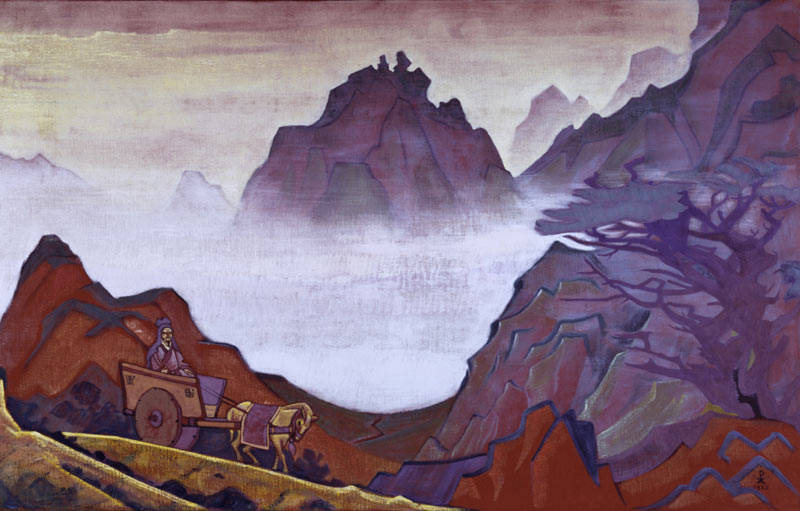
Confucius fair. Xnumx
At the end of winter, drugs and money ran out. Five members of the expedition died. All the dispatched news about the disaster was lost in unknown instances, and none of the travelers knew that in the world community there were already reports about the disappearance of the Roerichs expedition without a trace. But people survived, being at the limit of mental and physical abilities. The expedition to Lhasa was never allowed, but the caravan, kept for several months in an inhuman condition (from October 1927 to March 1928), was finally allowed to move to Sikkim. The Central Asian Expedition ended in May 1928, in Gangtok, the capital of Sikkim. Here Roerich’s guess was confirmed that the government of Lhasa blocked the further path of his expedition on the direct demand of the British special services, who saw Soviet intelligence agents and provocateurs participating in the campaign.
During the journey, the most unique scientific material was collected and classified, extensive cartography was compiled, and a number of collections were organized. Any museum in the world could envy archaeological finds. There were numerous bone and metal buckles, and stylized figures on bronze and iron. Menhirs and ancient burials were also sketched and measured, and the depth of study and the vastness of philological notes to this day are admired and surprised among Tibetologists.
In June, 1929 Nikolai Konstantinovich, along with his eldest son, returned to New York. We met him there with great honors. In honor of the Roerichs, 19 June was organized a grand reception. The hall, decorated with flags of all nations, could not fit all comers - politicians, businessmen, teachers and students of the Roerichs School of Art. There were speeches addressed to the artist, and epithets "progressive artist", "Asia's greatest researcher", and "the greatest scientist" fell from all sides. A few days later, Nikolai Konstantinovich was received by the President of the United States - Herbert Hoover. 17 October 1929 in New York opened the Roerich Museum. He was placed in the twenty-story skyscraper of the Master Building or otherwise the "House of the Master." Actually the museum was located on the ground floor and included more than a thousand paintings of Nicholas Konstantinovich. Higher were the Roerich organizations for the unification of the art of the entire planet, and even higher were the apartments of the employees.
Melancholy rarely visited this extraordinary energetic and active person. However, it is curious that the more the public praised him for his “earthly merits,” the more Roerich believed that he did not fulfill the goals he had prepared for him in life. He never intended to live in America and bathe in the glow of his own glory, Nikolai Konstantinovich returned to the United States only to find the means, documents and permits for a new trip to Asia. Elena Ivanovna did not go to the USA; she remained to wait for her husband in India, where the Roerichs acquired their estate.
For more than a year, despite all his connections, Nikolai Konstantinovich could not get a visa for India. All the same British intelligence was plotting intrigues, as it had previously feared the influence of the artist on its colony, in which riots had already begun. The proceedings with Roerich’s visa reached the size of an international scandal, the English Queen and the Pope intervened. Only in the 1931 year, two years after returning to America, did Roerich get the opportunity to meet his wife.
Their new home was located in the Kulu valley - one of the most beautiful places on the planet, the cradle of ancient cultural monuments. He stood on the spur of a mountain range, was built of stone and had two floors. From his balcony there were fabulous views of the source of the river Bias and snowy mountain peaks. And in the summer of 1928, the Himalayan Institute of Scientific Research, which was long overdue by the artist, was opened in the neighboring building, which was placed a little higher. Formally, this institution was headed by Yuri Roerich. Svyatoslav, the younger son of the Roerichs, chose his father’s path and became a famous artist. He also lived with his parents in the Kulu Valley. The backbone of the institute's employees consisted of a handful of like-minded people, but later dozens of scientific societies from Asia, Europe and America were involved in the collaboration. The Institute was engaged in processing the results of the first Central Asian expedition, as well as collecting new data. By the way, it was from here that the famous Soviet geneticist Nikolai Vavilov received seeds for his rare botanical collection.
Nikolay Konstantinovich, without losing hope of finding his Shambhala, was eager for a new campaign in Asia. He was financed by the second Manchu Expedition, which was finally helped by Henry Wallace, who worked in those years as US Secretary of Agriculture. Formally, the purpose of the campaign was to collect drought-resistant grasses growing in abundance in Central Asia and preventing soil erosion. Roerich set out on a journey in 1935 year. His route passed through Japan, then China, Manchuria, Inner Mongolia. 15 April on the expedition camp, located in the middle of the sands of the Gobi, soared "Banner of Peace". All members of the Pan-American Union and President Roosevelt on that day signed the "Roerich Pact", which he invented before the revolution in Russia. The main idea of the pact was that the participating countries committed themselves to protect cultural values during military conflicts.
Despite the not too optimistic mood of Nikolai Konstantinovich during his second expedition to Asia, the artist sincerely hoped that he would succeed in completing the research of the protected regions of India. However, there was a misfire again - the Americans turned the Manchurian expedition and ordered its members to return. It is known that, having learned this, Roerich, having moved away from the parking lot, with displeasure, discharged his revolver into the air. He was stifled by disappointment, he was far from young (61 was his year at the time), and clearly felt that this was his last journey.
At the same time, very curious events unfolded in the United States. While Roerich was in Manchuria, his former patron, businessman Louis Horsch, began a pre-planned destruction of the museum of the Russian artist in New York. He initiated checks of the tax service, as a result of which Roerich’s non-payment of income tax in 48 thousand dollars was revealed. Horsh’s behavior in this situation looked more than dishonorable, since it was he who conducted all the financial affairs of the Roerich family in the USA. In addition, for one night, the scammer took out all the paintings of the artist from the museum, changed the locks and ordered the rent of a huge building. The Roerichs, who did not expect such a turnover, for several years tried to defend their case in the US courts. Unfortunately, they failed not only to prove the ownership of the building, but even to their own art collections. Statements about the numerous deceptions committed by Horsch, such as forging Roerich's letters and bills, forging the papers of the council of attorneys, were also not confirmed in court; in addition, the businessman won private lawsuits against the Roerichs in excess of 200 thousand dollars. In 1938, all litigation was completed in favor of Horsch, and in 1941, in favor of the United States government.
Nikolay Konstantinovich never returned to America. Starting from the 1936 year and until his death, he lived without a break in his estate in India, leading a modest lifestyle. As before, Roerich worked a lot. He woke up as usual at five o'clock in the morning and went to his office to paint and canvas, in the evenings he preferred to write. The financial base of his projects was exhausted, and Nikolai Konstantinovich was forced to curtail the activities of Urusvati - the Institute of Himalayan Studies was suspended. And soon the Second World War began. The country was shaken by political passions - the Indians were eager to overthrow British domination, the slogans of “The British got out!” Hung everywhere. The British desperately resisted, responding with arrests and reprisals against the recalcitrant. At the same time, the Roerichs were engaged in organizing exhibitions and sales of their paintings in favor of the Soviet army, on the initiative of Nicholas Konstantinovich the American-Russian Cultural Association was founded. Jawaharlal Nehru and his daughter Indira Gandhi came to visit the artist for advice.
As a result, the Indian revolution took over. And immediately became an independent country began to fret civil strife among Muslims and Indians, who threatened to develop into a full-scale civil war. In the Roerichs' dwelling, located not far from Kashmir, shots were clearly heard. In the city of Hyderabad in the Shah Manzil Museum, Muslims organized a pogrom, which resulted in a fire. A collection of paintings by Nicholas and Svyatoslav Roerich burned in it. By 1947, Nikolai Konstantinovich was finally strengthened by the decision to return to his homeland - to Russia. Perhaps he realized that his house was still there, and the rest of the world remained a foreign land. In the messages to friends, he wrote: “So, on new fields. Full of love for the Great Russian People. " However, the artist failed to implement the plans - Roerich did not become 13 December 1947. In accordance with the ancient Slavic and Indian customs, his body was set on fire.
Elena Ivanovna’s petition submitted to the Soviet consulate for permission for her and her children to return to their homeland was also rejected. She passed away in India in October 1955. In the USSR in the 1957, only Yuri Nikolaevich Roerich returned, who later became an outstanding orientalist.
According to the materials of the site http://roerih.ru/ and the book M.L. Dubaeva "Roerich"
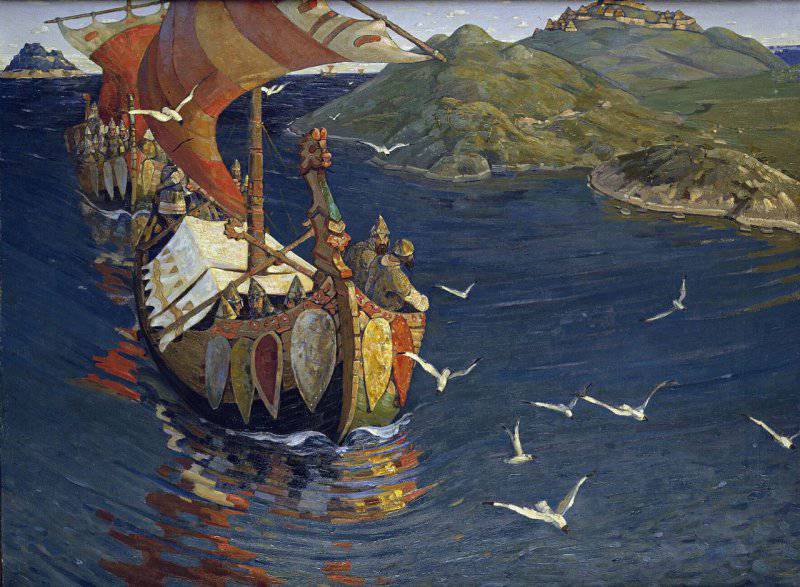
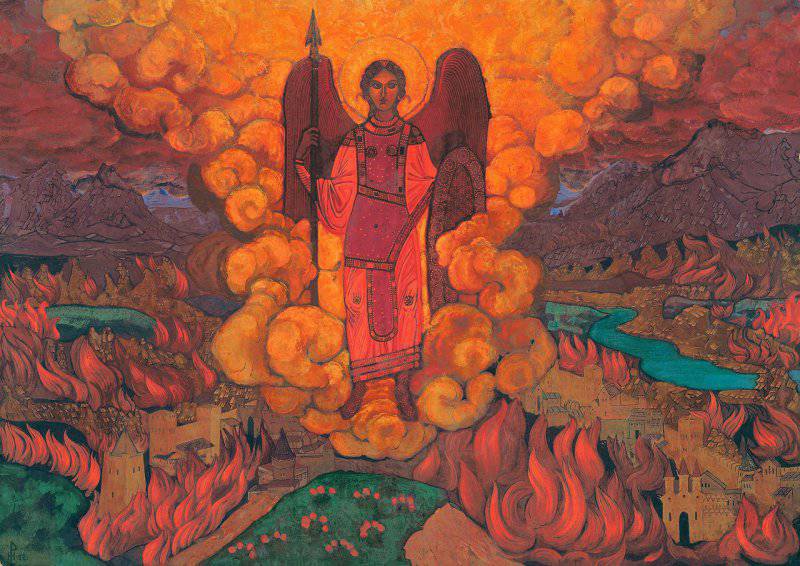
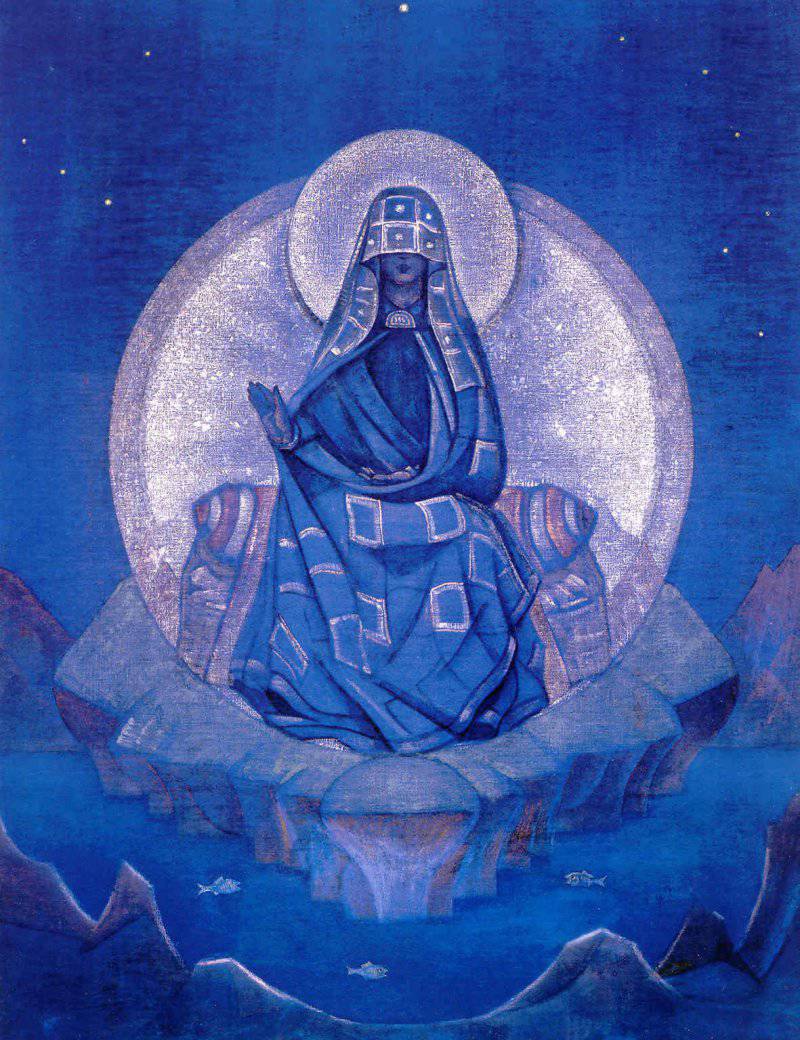
Information